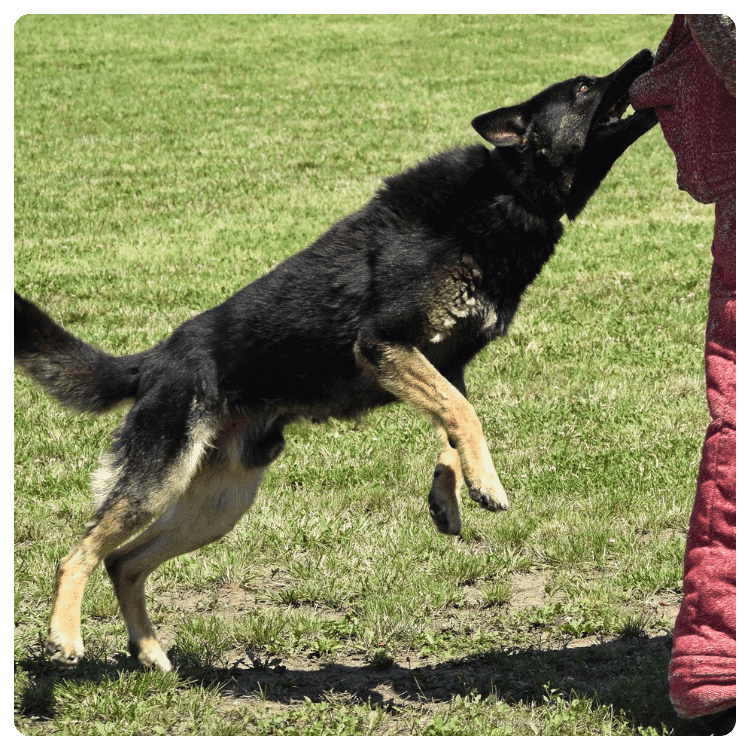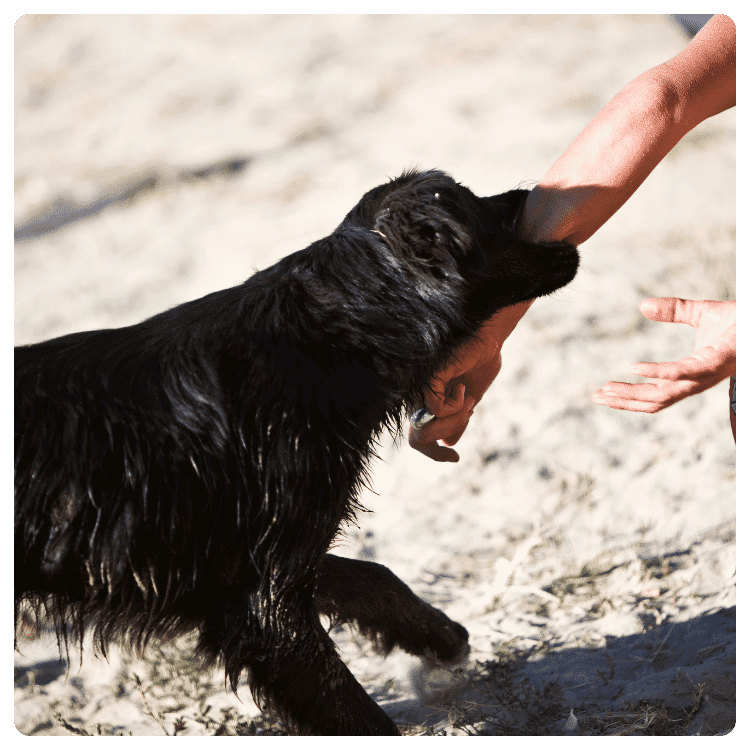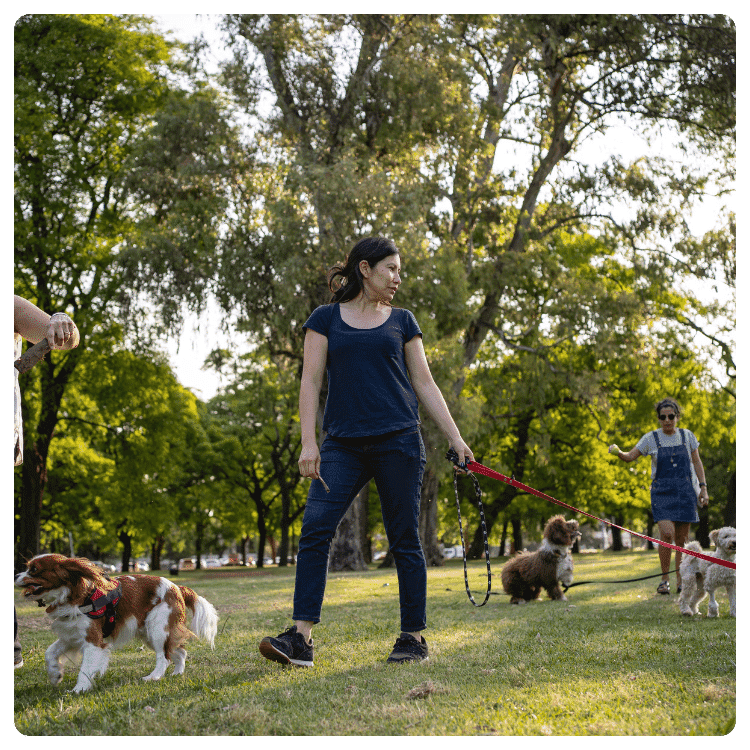When Dog Bites: Understanding Causes, Prevention, and Actions

Dog bites can be a traumatic experience for both the victim and the dog’s owner, especially if the number of dogs involved increases. They can cause physical harm, emotional distress, and legal consequences, especially in cases of serious dog attacks. Understanding why dogs bite, how to prevent bites, and what to do if a bite occurs is crucial for dog owners and the general public, especially given that emergency departments for dog bites see many cases each year. This blog will delve into the reasons behind dog bites, methods to prevent them, including bite inhibition, and the appropriate steps to take if you or someone you know is bitten.
Why Do Dogs Bite?

Dogs bite for various reasons, often rooted in their instincts or specific situations. Here are some common reasons why dogs may bite:
- Fear or Anxiety: Dogs may bite when they feel threatened or scared. This could be due to unfamiliar people, loud noises, or sudden movements.
- Protective InstinctsDogs are naturally protective of their territory, food, toys, and loved ones, which can lead to aggressive behavior towards a person or other animal. They may bite to defend themselves or their possessions.
- Pain or Illness and dog bite injuries can have long-lasting effects.: When dogs are in pain or not feeling well, they may react aggressively, which can lead to bites. Bites in these situations are often a response to the discomfort they are experiencing.
- PlayfulnessSometimes, dogs bite during play, which can lead to unexpected dog bite injuries, particularly in situations with a large number of dogs. While these bites may be less severe, they can still cause injury, especially to common victims of dog bites like young children.
- Frustration: Dogs can become frustrated, leading to aggressive behavior. This can happen if they are restrained or unable to reach something they want.
- Maternal Instincts: Female dogs with puppies may bite to protect their young.
- Understanding predatory instincts can help prevent situations where a dog may resort to biting.: Dogs might bite when they are in a high state of arousal, such as during a chase or hunt scenario, especially if they have a strong prey drive, which is why it’s important to train your dog to manage these impulses.
Understanding Dog Behavior

Recognizing the signs of aggression and understanding dog body language can be instrumental in preventing bites. Dogs often exhibit specific behaviors before they bite:
- Growling is often a warning sign that a dog may resort to biting if it feels threatened.: A clear sign of discomfort or warning.
- Snarling: Showing teeth is a more intense warning sign that a dog will bite.
- Stiff Body Language can indicate that a dog is feeling threatened or anxious, so it’s essential to recognize these signs to prevent potential dog attacks in the United States.: A dog that is rigid and tense is likely uncomfortable or ready to react.
- Pinned Back Ears: Indicates fear or aggression.
- Raised Hackles: The fur along the back stands up, signaling heightened arousal or fear.
- Avoiding Eye Contact can be a sign that the dog isn’t comfortable in the situation.: A dog might turn away and avoid eye contact if it feels threatened.
Preventing Dog Bites

Preventing dog bites requires a combination of proper training, responsible ownership, and public education, particularly around dogs that may also bite. Here are some effective strategies for dog bite prevention:
- Socialization: Exposing your dog to various people, animals, and environments from a young age can help them feel more comfortable and less likely to bite out of fear or anxiety.
- Training: Teaching your dog basic commands and good behavior is essential. Positive reinforcement training methods are particularly effective in promoting good behavior.
- Supervision is essential in dog bite prevention.: Always supervise interactions between dogs and young children to prevent accidents and teach children how to interact safely with dogs and other animals. Children may unknowingly provoke a dog by pulling its tail or ears.
- Avoiding Provocation is a vital part of dog bite prevention.: Teach children and adults how to interact with dogs properly. Avoid disturbing a dog that is eating, sleeping, or caring for puppies, as this can lead to defensive behavior if the dog doesn’t feel safe.
- Recognizing signs of aggression, such as growling and baring teeth, is crucial for preventing bites and ensuring safe interactions around dogs.Learn to recognize the signs of aggression in dogs, such as growling, baring teeth, and stiff body language, to prevent situations where a dog becomes aggressive. Knowing these signs can help you prevent a bite before it happens.
- Regular Health Check-Ups: Ensure your dog is healthy and not in pain. Regular visits to the vet can help detect and treat any underlying health issues that may cause aggressive behavior.
- Providing a Safe Environment for your dog, including using a leash in public spaces, is essential to prevent aggressive encounters.Make sure your dog has a safe and secure environment where it can retreat if it feels threatened or overwhelmed, especially during dog shows, to prevent any resort to biting. This includes having a designated space in your home where your dog can relax undisturbed.
- Exercise and Mental Stimulation is essential to help your dog stay balanced and reduce the likelihood of dog attacks in the United States.: Ensuring your dog gets enough physical exercise and mental stimulation can help your dog reduce frustration and energy levels that might lead to aggressive behavior.
What to Do If a Dog Bites

If you or someone you know is bitten by a dog, it’s essential to act quickly and appropriately:
- Stay Calm: Try to remain calm and avoid making sudden movements that could further agitate the dog.
- Clean the Wound promptly to prevent infections that dog bite victims often face.: Wash the bite wound with soap and water immediately to reduce the risk of infection.
- Seek Medical AttentionEven if the bite seems minor, it’s important to seek medical attention, as one bite can lead to serious complications. Dog bites can cause serious infections and may require antibiotics or other medical treatment, especially if the bite comes from strange dogs.
- Report the Bite: Contact local animal control or your health department to report the bite and seek medical attention for dog bites if necessary, especially if the dog who hasn’t been vaccinated for rabies is involved. This is important for tracking rabies and other potential public health concerns.
- Identify the DogIf possible, obtain information about the dog and its owner, as this can help assess the risk of being bitten by dogs. This includes the dog’s vaccination history, which can help determine if post-exposure rabies treatment is necessary.
- Document the Incident involving the dog, especially if there are dog bite victims.: Take photos of the injury and gather witness statements. This can be useful for any potential legal actions, especially in cases involving fatal dog attacks.
Legal Implications of Dog Bites
Dog bites can have significant legal implications for the dog owner:
- Liability issues can arise when a dog attacks, making it essential for owners to know leash laws.: Dog owners can be held liable for injuries caused by their pets. Laws vary by state and country, but owners may face fines, lawsuits, or even criminal charges.
- Quarantine and Rabies Testing are critical steps in ensuring that any dog who hasn’t been vaccinated is monitored for potential health risks.: In many jurisdictions, a dog that bites must be quarantined and tested for rabies.
- Insurance is crucial for dog owners, especially when dealing with incidents involving dog bite victims.: Homeowners’ or renters’ insurance may cover dog bite incidents, but it’s important to check your policy for specific coverage details related to dangerous dog breeds.
- Potential Euthanasia: In severe cases, especially if a dog has a history of aggressive behavior, authorities may require the dog to be euthanized.
Emotional Aftermath of Dog Bites
The emotional impact of a dog bite can be significant for both the victim and the dog’s owner. It is essential to address these emotional wounds to promote healing and prevent future incidents.
- Victim Support: Victims of dog bites, especially children, may develop a fear of dogs, which can be mitigated by responsible ownership and proper socialization of the dog in the household. Counseling or therapy can help them overcome this fear and rebuild confidence.
- Owner Support: Dog owners may feel guilt and distress after their dog bites someone. Support groups and counseling can help dog bite victims cope with these feelings.
- Training and rehabilitation are essential to help your dog learn to interact safely with the human family and other pets.In some cases, aggressive dogs can be rehabilitated through professional training, as recommended by the American Veterinary, which can help prevent fatal dog attacks and make your dog a safer companion. Working with a professional dog trainer can address the root causes of aggression and help modify the dog’s behavior.
Educating the Public

Public education plays a crucial role in preventing dog bites, emphasizing the importance of proper training and leash use to ensure that all dogs also behave appropriately in public spaces. Here are some key points to include in public awareness campaigns about how to make your dog safe around people or other animals:
- Understanding Dog Behavior: Teaching people about dog body language and signs of aggression can help prevent bites, a key aspect of national dog bite prevention efforts.
- Safe Interaction: Educating the public on how to approach and interact with dogs safely can reduce the risk of bites. This includes asking for the owner’s permission before petting a dog and avoiding direct eye contact.
- Responsible Ownership: Highlighting the responsibilities of dog ownership, such as training, socialization, and providing a safe environment, can help prevent aggressive behavior in dogs.
- First Aid for Dog Bites: Providing information on how to administer first aid for dog bites can help reduce the severity of injuries and promote faster healing.
Conclusion
Understanding the causes of dog bites, implementing prevention strategies, and knowing what to do if a bite occurs are crucial steps in ensuring the safety of both people and dogs. Responsible pet ownership, proper training, and public education can significantly reduce the incidence of dog bites and foster a safer, more harmonious relationship between humans and their canine companions.
By taking proactive measures, you can help prevent dog bites and ensure that your dog remains a beloved and well-behaved member of your community. Remember, the key to preventing dog bites lies in understanding, education, and responsible ownership, as emphasized by the American Veterinary Medical Association, especially considering that many people are bitten by dogs each year. Working together, we can create a safer environment for everyone and ensure that our interactions with dogs are positive and enjoyable, minimizing the risk of one bite.












































